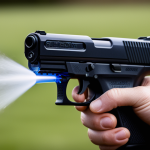Understanding Triathlon Transitions
In the world of triathlons, triathlon transitions are crucial yet often underestimated. A well-executed transition can significantly enhance race performance. Transitions, namely T1 and T2, are the critical changeovers: T1 from swim to bike, and T2 from bike to run. These phases are pivotal as they contribute directly to the overall race time, bridging the adrenaline-filled segment changes.
Unfortunately, there are several transition strategies myths that can mislead athletes. Some believe transitions are merely resting phases; however, they are far from a breather and require swift, decisive action. Another common misconception is that transitions don’t affect the final timing substantially. On the contrary, a smooth and quick transition can garner precious minutes, acting as a competitive edge.
Additional reading : Unlock Your Peak Performance: Top Training Techniques to Boost Lactate Threshold for Endurance Athletes
Incorporating effective transition strategies can convert these intermediary segments into seamless parts of the race. Planning is essential—focusing on the details from dismounting the bike efficiently to quickly changing footwear without fumbling is key. Perceiving transitions as an integral component rather than a gap between segments will elevate an athlete’s performance, applying pressure where it counts.
Techniques for Efficient Transitions
Mastering efficient transitions in triathlons can markedly improve triathlon speed. To achieve a quick transition, athletes can follow step-by-step guides tailored for T1 and T2. For T1, have your bike gear laid out systematically. Prioritize items such as helmets, shoes, and glasses close at hand for an easy workflow. During T2, place running shoes and any necessary nutrition in clear sight.
Have you seen this : Unlock Peak Muscle Gains: How Strategic Protein Timing Transforms Your Weightlifting Success
Mental preparation plays a crucial role in efficient transitions. Visualise the process before the race; mentally rehearse each movement from swimming to biking, and then to running. This practice ensures mental readiness and reduces anxiety.
Another vital aspect is the organisation of the transition area. Keep your transition zone clutter-free. Arrange your gear in a sequence that mirrors the procedural order of the race. Consider these tips to streamline your transitions:
- Stack shoes for a seamless grab-and-go.
- Use versatile gear, such as elastic laces, to save time.
- Remember to hydrate quickly but effectively.
With a strategic approach, focusing on both physical and mental tactics, triathletes can enhance race performance by executing faster, more efficient transitions every time.
Training Drills to Improve Transition Skills
Incorporating transition training drills is crucial for honing the skills needed for swift and seamless triathlon transitions. These practice techniques can significantly reduce transition times, bolstering overall race efficiency. Begin by incorporating brick workouts, where athletes transition from one discipline to another without pause. This drill enhances muscular adaptation and improves transition speed.
Incorporate multisport race simulations into your routine. These allow triathletes to practice full transitions in a controlled environment, refining their skills with each attempt. Practicing transitions during regular workouts also helps athletes develop muscle memory, crucial for performing transitions smoothly under race pressure.
To effectively utilise race simulations, set up your practice techniques similar to race day. Ensure your gear and setup echo actual conditions as closely as possible. Focus on quick footwork, efficient gear swaps, and overcoming any practice techniques bottlenecks you might encounter. Regularly integrating these drills into your training plan will build confidence, reduce errors, and ultimately enhance race performance.
Common Mistakes and How to Avoid Them
In triathlons, recognising and mitigating transition mistakes is crucial to maintaining momentum in the race. Athletes often make errors like misplacing equipment, leading to unnecessary delays. The choice of gear impacts transition efficiency significantly; ensuring the right fit and function of your equipment can save valuable seconds.
Several pitfalls emerge from underestimating the importance of organisation. Placing gear in incorrect sequences or overcrowding the transition area can lead to confusion. Athletes should keep their zones tidy, facilitating swift gear changes.
Overlooking psychological factors can also thwart a smooth transition. Nerves often disrupt focus, causing athletes to fumble with tasks they have otherwise mastered during practice. Address nervousness by breathing exercises or reciting a mental checklist during the transition.
To reduce transition errors:
- Map out your transition routine.
- Conduct regular gear inspections to secure optimum performance.
- Create a mental rehearsal technique.
By focusing on these strategies, athletes can tackle transitions confidently, translating preparation into performance on race day. As athletes internalise these triathlon tips, they gradually overcome transition pitfalls, ensuring a more streamlined and effective race experience.
Personalizing Your Transition Strategy
To elevate your triathlon performance, creating a custom transition plan tailored to your specific needs is indispensable. Considering various factors like race distance, personal strengths, and gear preferences can significantly refine your approach. For instance, shorter races might demand quicker transitions, while endurance events can afford slightly more meticulous setups.
Successful triathletes often compose athlete-specific strategies that leverage their unique attributes. A sprinter, focusing on speed, may prioritize transition optimization by arranging gear for rapid accessibility, whereas an endurance athlete might emphasize comfortable footwear for prolonged runs. These approaches underline how one size does not fit all in triathlon transitions.
Adapting techniques based on race distances involves strategic consideration. For sprint triathlons, reducing weight and eliminating non-essential items can enhance agility. Meanwhile, longer races benefit from hydration and nutrition stations to sustain energy levels. This nuanced adaptation supports athletes in maintaining consistency across different events.
To personalize your strategy, consider integrating aspects such as:
- Gear compatibility with the race’s needs.
- Reviewing past races to identify improvement areas.
- Consulting coaches or utilizing technology for feedback.
Tailoring transitions by aligning them with individual goals lays the foundation for improved race performance.
Additional Resources for Triathletes
To maximize transition efficiency, having the right transition resources at your disposal is essential. These include downloadable guides and training checklists specifically crafted to streamline the transition process. They help athletes organize and review their gear, ensuring everything is in place for a smooth transition.
Beyond written resources, various books, videos, and articles provide valuable insights on optimising transitions. These materials are enriched with expert advice and success stories that demonstrate the process in action. Delving into these can equip triathletes with a deeper understanding of effective strategies, enhancing both their practice and race performance.
Moreover, today’s technology offers numerous apps and tools designed to track and analyze transition times. These applications facilitate the continuous monitoring of performance metrics, allowing athletes to make data-driven adjustments to their strategies.
Consider integrating the following into your routine:
- Checklists for gear management.
- Apps for tracking and optimizing times.
- Videos for visual learning.
Utilising such resources not only boosts confidence but also helps in aligning individual strategies with broader tactics proven to enhance performance.


